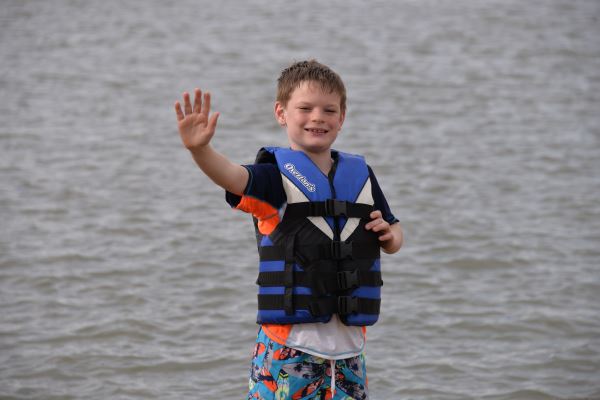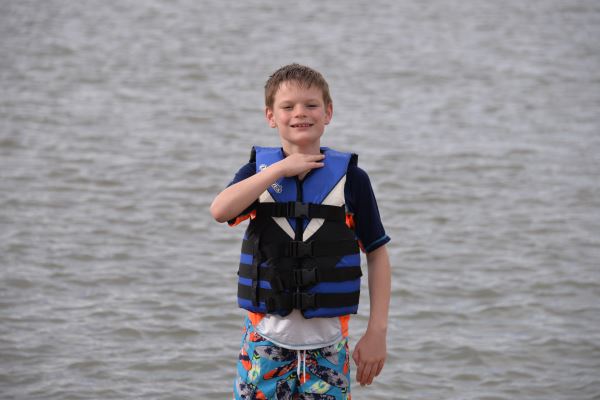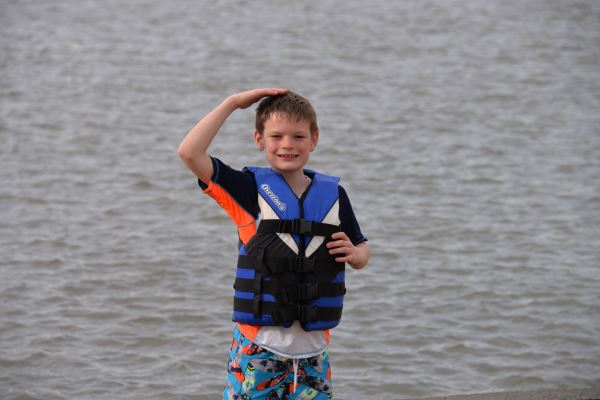.JPG_600.jpg)
One summer years ago, my husband and his sisters were out tubing on Canyon Lake, Ariz., with their uncle, Juan. They were set up with a mirror so Juan could see when they gave him the classic signals—you know, the thumbs-up to go faster, the thumbs-down to go slower, etcetera. Unfortunately, that mirror made things look pretty small. And let’s just say Juan likes to get his speed on. The three kids piled onto the tube, excited, relatively dry and giggling while they squirmed into good positions.
Then Juan hit the throttle.
The kids were sent skipping across the surface like a three-headed stone. It took a long heart-stopping minute for one of them to prise a white-knuckled hand from the tube handle to give Juan a frantic thumbs-down.
Juan, looking in his mirror, saw an enthusiastic thumbs-up. Not one to back down from fun to be had, he let the motor roar.
Now the kids were truly frantic as they ceased skipping and simply flew across the lake like a lightning bolt hurled by Zeus himself. All three peeled off hands to give him desperately pumping thumbs-downs.
And Juan, looking back, saw three wildly enthusiastic thumbs-ups! Impressed with the fortitude of these crazy kids, he grinned and really let the ponies run.
You can imagine the end of that particular tube ride. To this day, my husband’s hair still stands on end, and the faces of all three are pulled back in perpetual grins from the G-force damage to their cheeks. If you look closely enough, the “freckles” on the youngest are really the permanently tattooed patterns of water spray.
Let’s just agree that having a specific set of hand signals will help you communicate what the high-pitched screams of fear over the roar of wind and water won’t. And we’ll go ahead and add that if you can’t really see your kids’ tiny hands in a mirror, you should always have a spotter perched in the stern to keep watch, anyway. You can even come up with your own system if you prefer, but the most important thing is to make sure everyone onboard agrees before you head out onto the water.
And now, without further ado, here are nine classic hand signals you need to know next time your family hits the lake for some water sports!
.JPG_600.jpg)
1. Speed Up
When you’re on the tube or wakeboard and you’re ready to go faster, give the boat driver a clear thumbs-up. If you’ve had problems with this one in the past (cough, cough, Juan), try pointing high in the air or just pointing up once instead of pumping your hand up and down.
.JPG_600.jpg)
2. Slow Down
The clear opposite of speed up, this signal is a simple thumbs-down. Likewise, to help the captain differentiate between these two, you can keep your hand low.
.JPG_600.jpg)
3. Speed OK
Once you hit the speed you want to stay at, give the driver an “o” by touching your thumb to your pointer finger.
.JPG_600.jpg)
4. Turn Left
If you want the driver to take you to the left, keep your fingers straight and stretch your entire hand out to the left. Some boaters like to add a circling motion above their head before they do this, to further signify “turn.”
.JPG_600.jpg)
5. Turn Right
Again, this is an easy opposite. Just stretch your hand out to the right, using that overhead circling motion if that’s your jazzy style.

6. Rider OK
After a wipeout, show the driver you’re okay by clasping both hands over your poor uninjured head.

7. Stop
When you’ve had enough, simply raise your hand straight up in the air, like a cop stopping traffic.

8. Cut Motor
If you need the captain to stop the engine, slash your hand across your throat. You know, as if you’re a mob boss saying, “Stop that motor or you’re gonna be sleeping with the fishes!”

9. Back To Shore
If you’re the last rider of the day and you’re ready to head back to the dock, pat the top of your head. A job well done!


